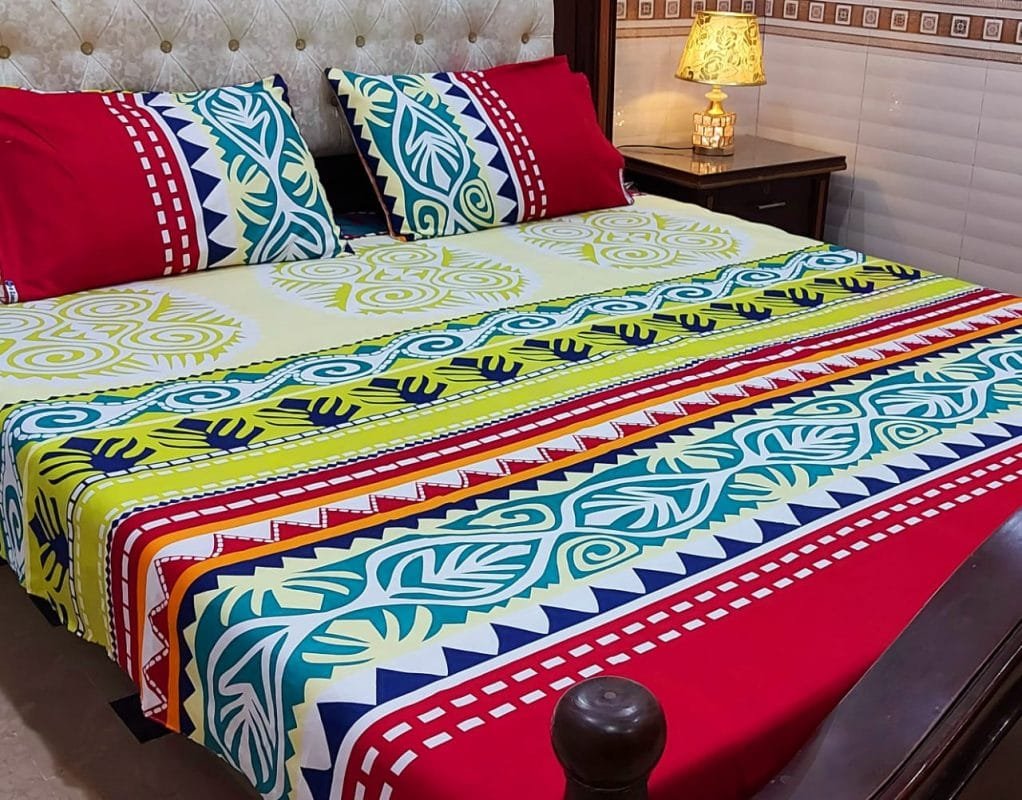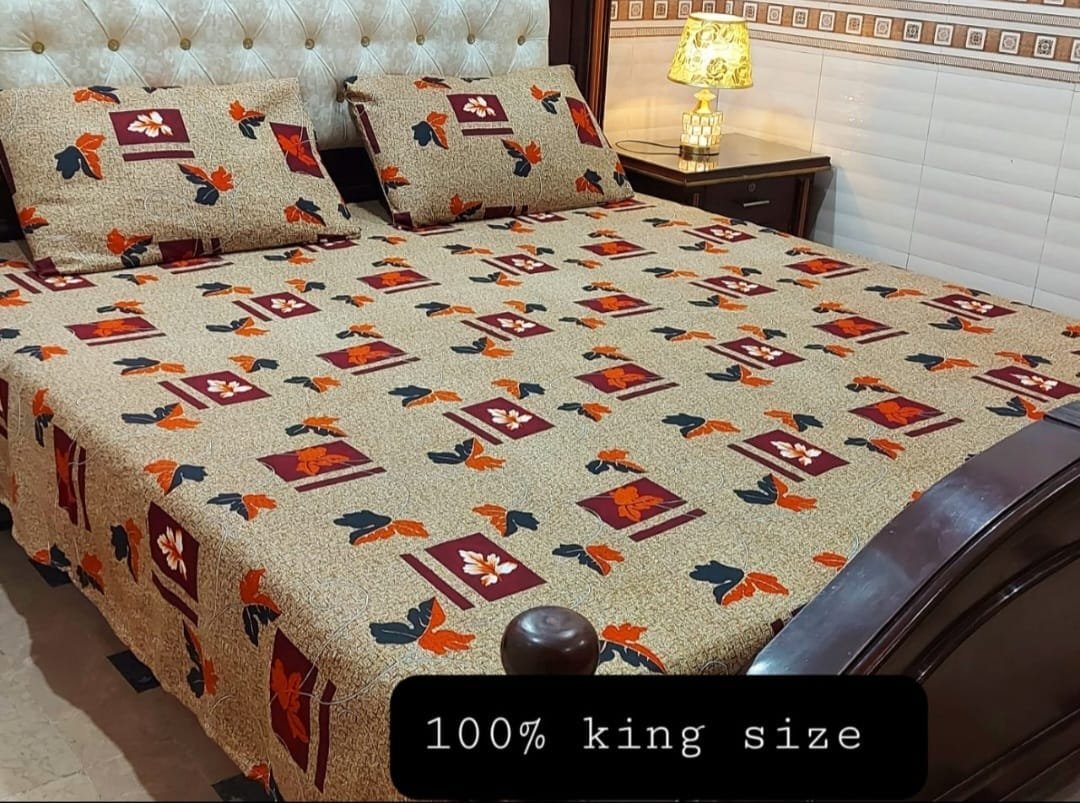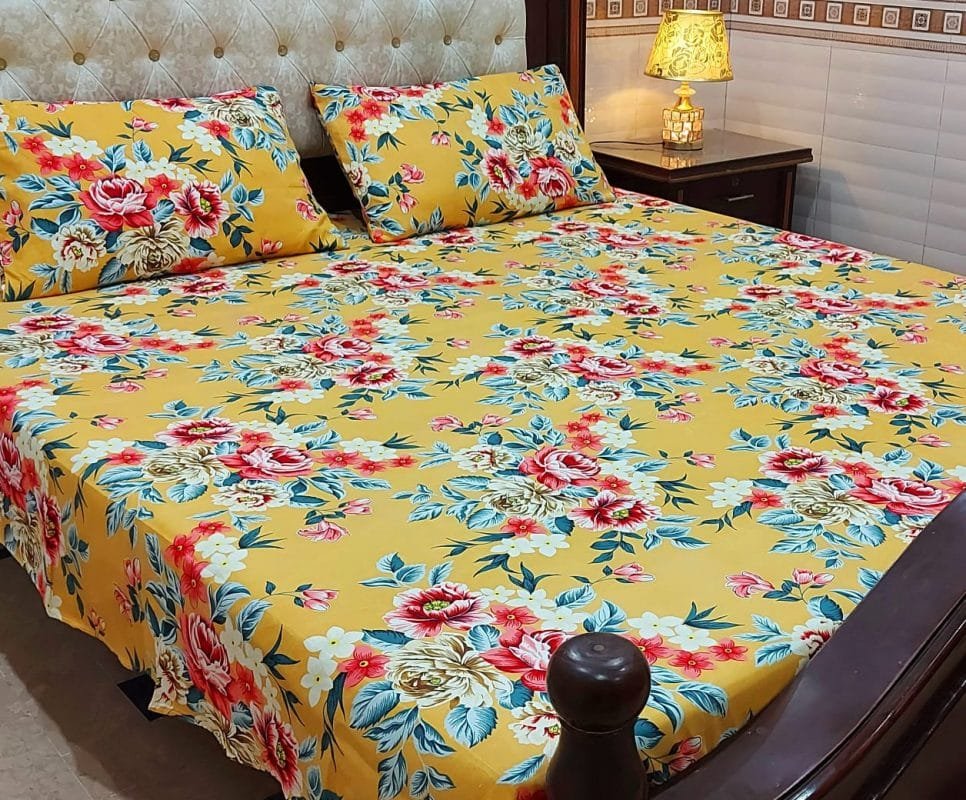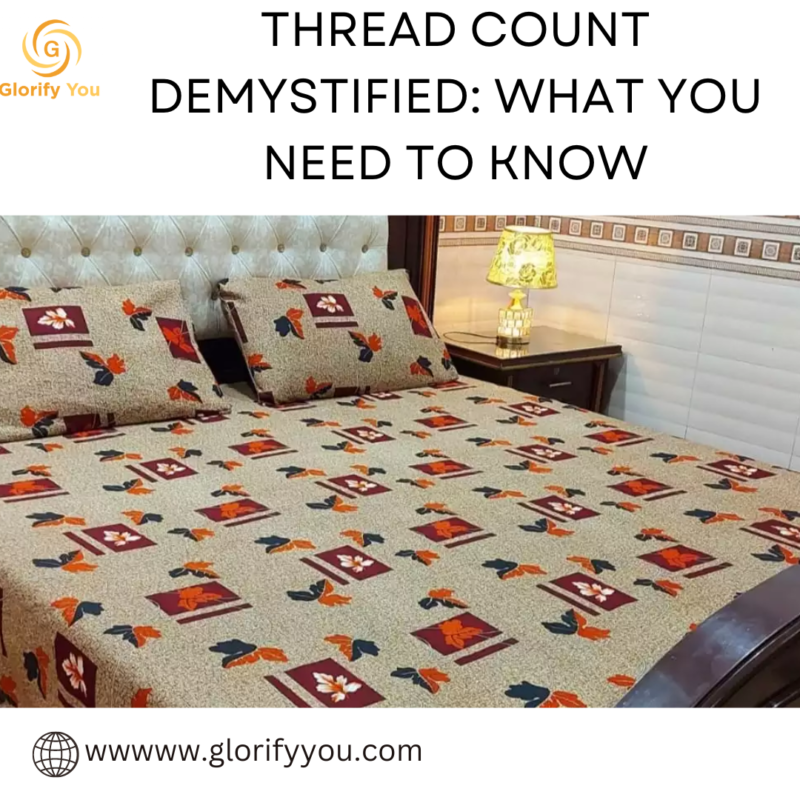No products in the cart.
Blogs
Thread Count Demystified: What You Need to Know
Thread Count Demystified: What You Need to Know
When it comes to bedding, thread count is a term that often gets thrown around, promising luxurious comfort and quality. But what exactly does thread count mean, and does a higher thread count always equate to better bedding? Let’s delve into the world of thread count and unravel the truths behind this commonly misunderstood concept.
What is Thread Count?
Thread count refers to the number of threads woven into a square inch of fabric. This count includes both vertical (warp) and horizontal (weft) threads. In theory, a higher thread count suggests that the fabric is denser, finer, and of better quality. Traditionally, a thread count ranging from 200 to 800 threads per inch has been considered standard for bedding fabrics.
The Myth of Higher Thread Count
While a high thread count might seem like an indicator of better quality, it’s not the sole factor determining the comfort and durability of bedding. Manufacturers sometimes inflate thread counts demystified by using thinner, lower-quality threads or by using multi-ply yarns, where multiple threads are twisted together. This can create a misleadingly high thread count without actually enhancing the fabric’s quality.

Quality Over Quantity
Instead of fixating solely on thread count, consider the quality of the materials used. Factors like the type of cotton (Egyptian, Pima, Supima), the weaving technique, and the finishing process play crucial roles in determining the overall feel and durability of the fabric. Egyptian cotton, for instance, is known for its long fibers, which can result in smoother and more luxurious bedding.
Weave Matters
The weaving technique used affects how the fabric feels against your skin. Common weave types include percale and sateen. Percale has a crisp, matte finish and feels light and breathable, making it perfect for warmer weather. Sateen, on the other hand, has a smoother, silkier surface due to its weave structure, but it may trap more heat. Your personal preference will determine which weave suits you best.
Personal Comfort Matters Most
Ultimately, personal comfort should guide your bedding choices. A lower thread count does not necessarily mean discomfort, nor does a high thread count Demystified guarantee the best sleep experience. Some individuals prefer the feel of a lower thread count for its breathability and lighter weight, while others enjoy the smoothness of a higher thread count.
Caring for Your Bedding or thread count
Regardless of thread count, proper care is essential to prolong the life of your bedding. Follow the care instructions provided by the manufacturer to ensure that your sheets and pillowcases stay soft, vibrant, and durable over time.

Busting Common Myths About Thread Count
As with many things, thread count has generated its fair share of myths that need debunking:
Thread Count or Better Quality: We’ve touched on this already, but it’s worth reiterating that a sky-high thread count doesn’t guarantee superior quality. It’s the interplay between thread count, material, and weave that determines the overall feel of your bedding.
Thread Count : Softness depends on the type of cotton, yarn quality, and finishing processes used. A well-crafted lower thread count sheet made from high-quality materials can be just as soft, if not softer, than a higher thread count sheet with inferior materials.
Thread Count Determines Durability: Durability hinges on the type of fabric and how it’s constructed. A densely woven, lower thread count fabric made from durable materials can outlast a high thread count fabric that’s poorly woven and made from weaker fibers.
Thread Count Can’t Be Manipulated: Manufacturers can play tricks to inflate thread counts, as mentioned earlier. Be cautious if a deal seems too good to be true – it might involve compromising on quality.
Thread Count is the Only Consideration: Focusing solely on thread count overlooks other vital factors like breathability, moisture-wicking capabilities, and the specific feel you desire against your skin.
Choosing Wisely
When shopping for bedding, take the following steps to make an informed decision:
Touch and Feel: Whenever possible, feel the fabric before purchasing. Judge it based on its softness, smoothness, and thickness. Your senses will guide you better than a number on a label.
Consider the Weave: As mentioned earlier, the weave affects how the fabric feels. Understanding the difference between percale and sateen weaves can help you choose the one that aligns with your preferences.
Check Material Quality: Research different cotton types and their characteristics. Egyptian cotton, for instance, is known for its premium feel due to its longer fibers.
Read Reviews: Online reviews can provide insights into real people’s experiences with specific bedding products. Pay attention to comments about comfort, durability, and overall satisfaction.
Invest in What Matters: Instead of splurging on a high thread count that might not deliver the comfort you seek, invest in quality materials and a weave that suits your sleeping habits and climate.
The Final Thread count demystified
In the grand tapestry of bedding, thread count is just one thread – a piece of the larger puzzle that contributes to your sleep sanctuary. By focusing on factors beyond thread count, you’ll make more informed decisions that lead to better sleep quality, comfort, and overall satisfaction. So, whether you’re cocooned in a high thread count demystified or snuggled up in a lower one, remember that the true measure of bedding quality lies in the way it complements your personal preferences and promotes restful slumber.
Maintaining Your Bedding’s Brilliance
Once you’ve found the perfect thread count bedding that aligns with your preferences, it’s important to care for it properly to ensure it stays comfortable and vibrant for years to come. Here are some tips for maintaining your bedding’s brilliance:
Follow Care Instructions: Different materials and weaves have varying care requirements. Always follow the care instructions provided by the manufacturer to avoid damaging the fabric. This may include recommendations for washing, drying, and ironing.
Gentle Washing: Use a mild detergent and opt for a gentle cycle when washing your bedding. Avoid using harsh chemicals, bleach, or fabric softeners, as these can degrade the fabric over time.
Cool Water: Wash your bedding in cool water to prevent excessive shrinkage and preserve the colors. Hot water can weaken the fibers and cause fading.
Separate Colors: Wash your bedding separately from other items to prevent color bleeding. Whites should be washed with whites, and dark colors with dark colors.
Drying Carefully: If possible, line-dry your thread count bedding to prevent excessive wear from high heat. If using a dryer, opt for a low heat setting. Avoid over-drying, as it can cause fabrics to become brittle.
Storage Matters: When storing your bedding, ensure it’s clean and completely dry to prevent mold and mildew growth. Use a cool, dry place and avoid direct sunlight, as it can fade colors.

Rotate Bedding: To extend the life of your bedding, rotate multiple sets. This reduces the frequency of washing and wear on any one set.
Iron with Caution: If you prefer wrinkle-free bedding, iron it on a low heat setting. Use a pressing cloth to protect the fabric from direct contact with the iron.
Regular Inspection: Periodically inspect your bedding for signs of wear, thinning, or damage. Address any issues promptly to prevent further deterioration.
Thread count bedding
As you embark on your bedding journey, remember that thread count is just a single strand in the intricate fabric of bedding quality. Balancing thread count with material, weave, and personal comfort is the key to finding the perfect bedding that promotes restful sleep and relaxation.
By understanding the nuances of thread count demystified band looking beyond marketing hype, you’ll be better equipped to make informed decisions that align with your preferences and lifestyle. So, whether you prefer the luxurious embrace of a high thread count or the breathable simplicity of a lower count, may your bedding journey lead to nights filled with comfort, tranquility, and the rejuvenation you deserve.
Conclusion
While thread count can provide a rough idea of a fabric’s density, it’s not the sole determinant of quality. Instead, consider factors like material, weave, and personal preference when choosing bedding that suits your needs. Ultimately, a balance of these elements will contribute to a comfortable and satisfying sleep experience. Don’t be swayed by marketing jargon; focus on the details that truly matter for your restful nights


